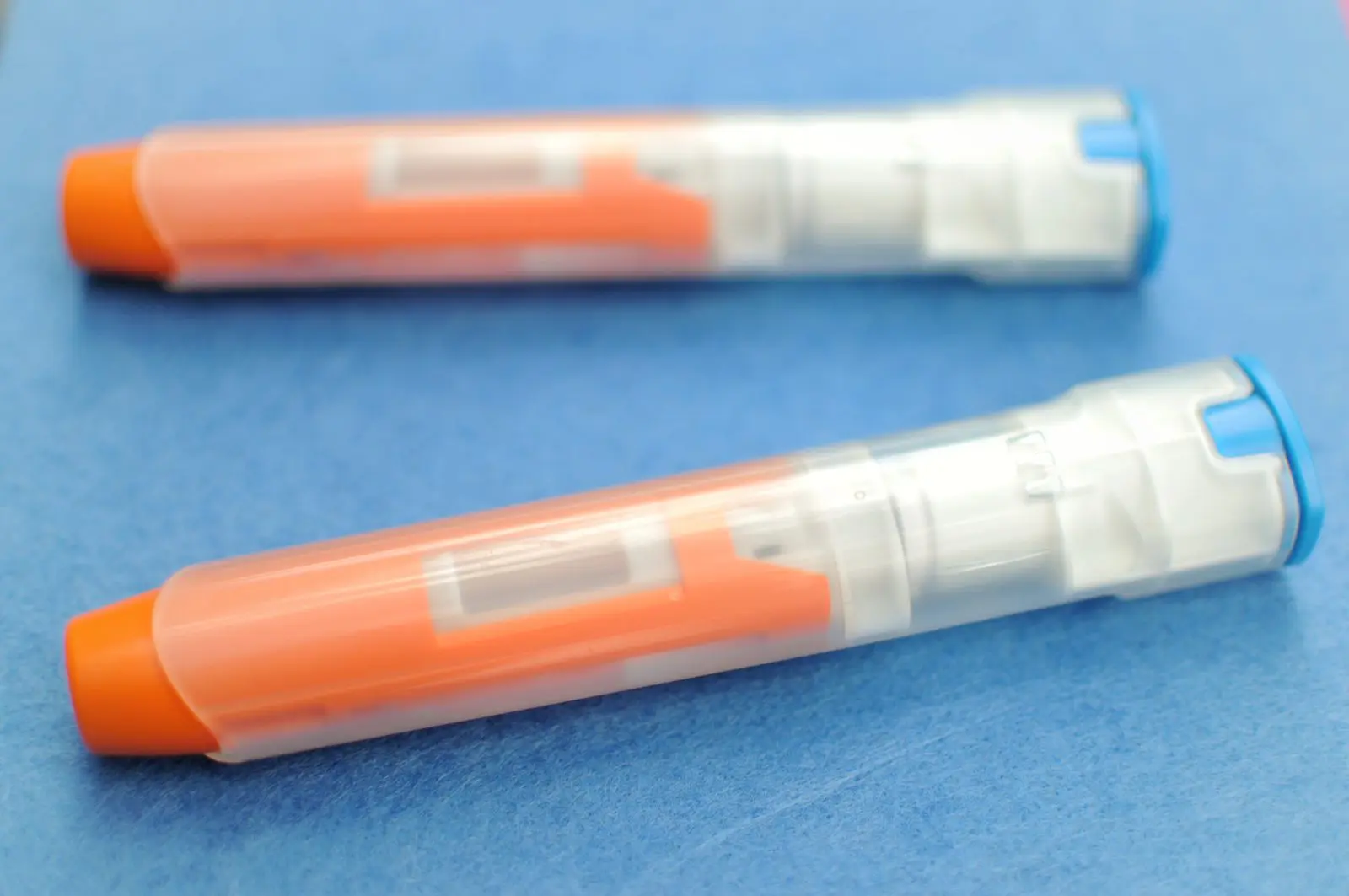Question
How quickly do antihistamines work versus an epinephrine auto-injector?
Answer
Antihistamines are typically given orally, and they can take an hour to take effect. Epinephrine is a shot that is injected in the leg muscle, and it works within minutes.
Epinephrine is a medication that targets and treats the symptoms and triggers of anaphylaxis.
An antihistamine will block histamine, but histamine is only one of the factors involved in an anaphylactic reaction, so this will not treat anaphylaxis effectively.
Any delay in treatment of anaphylaxis can increase the risk of hospitalization or death.
Epinephrine is very safe. You may experience side effects such as increased heart rate, but taking epinephrine when you are not experiencing a severe allergic reaction will not put you in danger. If you think you or your child might need epinephrine, go ahead and use it. You’re much better off treating anaphylaxis with epinephrine without delay, than choosing to watch and wait. Don’t want to risk a life-threatening reaction by not administering epinephrine early enough.
Question
What would cause anaphylaxis in a patient receiving their first immunotherapy maintenance shot? It occurred about three minutes after injection. Was it pure chance, could the dose have been too high, or is there some other potential cause?
Answer
Anaphylaxis is a rare side effect of immunotherapy, although it is known to happen.
You should always discuss the risk of anaphylaxis with your allergist prior to initiating immunotherapy.
Certain factors can increase the risk of adverse reactions to immunotherapy. These include uncontrolled asthma, a prior history of anaphylaxis to immunotherapy, and receiving shots during the peak pollen season. Additionally, some medications, such as beta blockers and ACE-inhibitors, can make shot reactions more severe when they do occur. It is important to alert your allergist to any new medications or health changes prior to getting your shot.
You should meet with your allergist prior to your next shot to discuss what particular factors, if any, may have contributed to the reaction, in order to prevent it from happening again.
Question
My friend has severe contact dermatitis, including intermittent fevers up to 103, from overexposure to epoxy while working in a boatyard. Could this be an allergic reaction? He has been treated by a dermatologist with steroid injections and mild antihistamines, but he is not getting better. His symptoms have been severe for several weeks. Would this be better treated by an allergist?
Answer
Epoxy resin can cause more than one type of allergic reaction, but a specific patient usually has only one. It would seem that your friend may be having two different types of unrelated allergic reactions. The following is a summary of some medical facts about contact dermatitis and hypersensitivity pneumonitis, which have both been reported in association with epoxy resin. Your friend should completely avoid all exposure to epoxy resin, and should schedule a consultation with an allergist to better diagnose and evaluate his symptoms. A material safety data sheet may help your friend identify potential sources of exposure.
Contact dermatitis is the most common allergic reaction to epoxy resin and tends to occur when there is skin contact with uncured epoxy resin. While bisphenol A is the main allergen, other components (e.g., epichlorohydrin, diglycidyl ether) may also cause skin irritation. After the epoxy resin hardens, curing can take up to 2 weeks. However, patients who are very sensitive can even react to “cured” products containing epoxy resin. Nitrile rubber or nitrile butyl gloves, in addition to goggles and protective clothing are recommended for avoidance. Epoxy resin is widely used for sporting goods, dental work, and vehicle parts. For patients with dermatitis related to exposure, corticosteroids and emollients are frequently used for treatment. Unfortunately, in sensitive patients, recurrence of dermatitis occurs with re-exposure to epoxy resin.
Fever is not typically seen with contact dermatitis, but can be one of the symptoms of hypersensitivity pneumonitis or inhalation fever. In both hypersensitivity pneumonitis and inhalation fever, inhaling epoxy fumes or dust results in symptoms within a few hours. Both of these diseases can start with fever, chills, malaise, nausea, headaches and myalgias (muscle pains). While inhalation fever is not associated with lung symptoms, hypersensitivity pneumonitis is associated with cough, chest tightness, and shortness of breath. Hypersensitivity pneumonitis can develop into a very serious chronic lung disease. when hypersensitivity pneumonitis is present, the allergist is likely to find abnormalities on physical exam, chest x-ray, labs, and pulmonary function studies. If either of these two conditions are diagnosed, the patient should strictly avoid exposure to epoxy resin.
Back to Resources
Severe Reactions, Anaphylaxis & Epinephrine
Find answers to popular questions about severe reactions, anaphylaxis and epinephrine.
